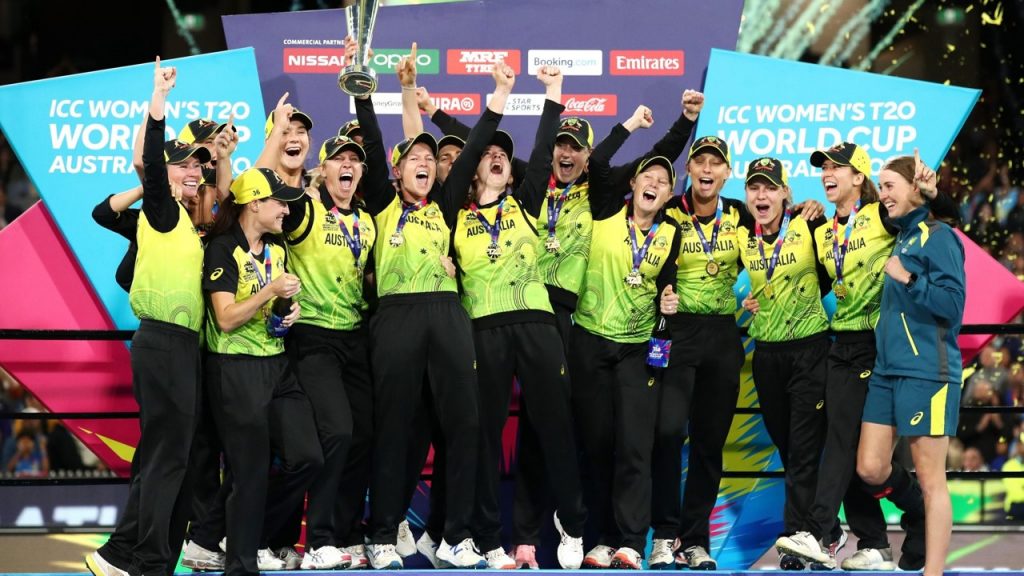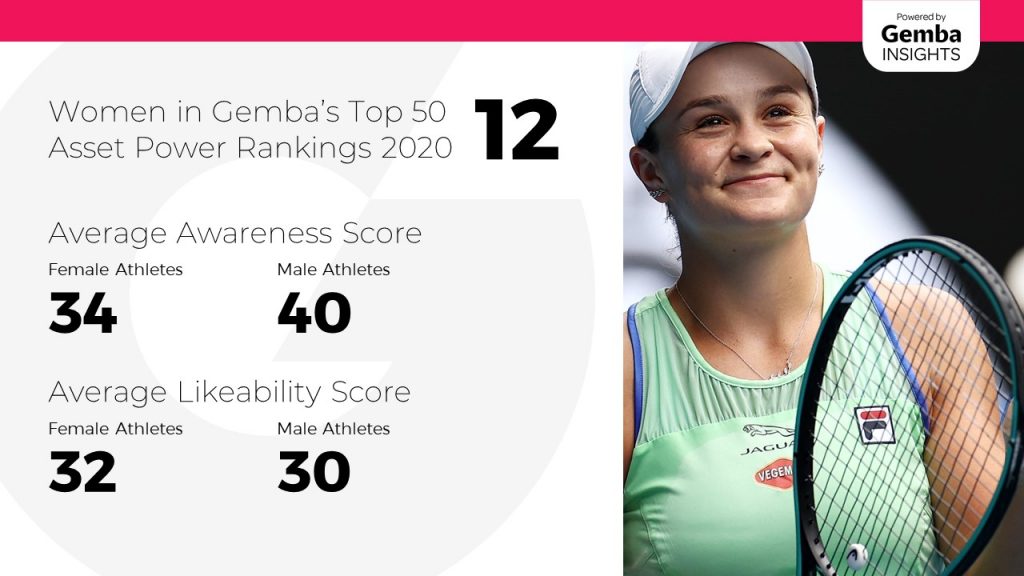The reactions to headlines around female athletes this week – with many calling out “Australia’s Top 100 WAGs” and references to an elite female cricketer as the wife of a male sportsperson rather than an athlete in her own right – are indicative of the continued momentum to recognise the skills, achievements and commercial value of women’s sport.
But the reality remains that most of the exposure, coverage and awareness is focused on men’s sport and male athletes. This is limiting the commercial potential of women’s sports and preventing broadcasters and sponsors from matching the amounts they commit to men’s sports.
It’s a vicious cycle – without exposure the money doesn’t flow; but without money it’s difficult for women’s sport to get the platforms and exposure it needs to grow reach and attract investment.
Gemba has been tracking the “star power” of hundreds of athletes, teams and leagues over many years through our “Gemba Asset Power” research. Asset Power is a measure of the awareness and likeability of an athlete/ambassador, team or league. Those athletes that have high awareness among the general population and are appealing and well-liked represent attractive targets for sponsors seeking to leverage that fan equity into their marketing campaigns.

A quick analysis of trends and differences between how Australians perceive male and female athletes uncovers some interesting insights, and highlights the untapped potential for female sports and athletes:
- Female athletes are, on average, more likeable and appealing than the men. But the women are far less widely known, dragging down their overall Asset Power scores. This underpins the argument that the barrier to greater Asset Power – and to greater commercial investment – is not that people are not interested in women’s sport or don’t like female athletes, it’s the lack of exposure and awareness.
- The handful of female athletes that do rank highly among the men (there are 12 females in Gemba’s Top 50 athletes by Asset Power) tend to be global individual stars (like Ash Barty, tennis world #1; Steph Gilmore, 7-time world champion surfer) or members of national teams (Cate and Bronte Campbell, Olympic swimmers; Alyssa Healy and Ellyse Perry, T20 Cricket World Cup winning cricketers).
- Women playing in the AFLW or NRLW, or even in national teams of lower profile than the cricket and Olympic Swimming teams (such as the successful Women’s Rugby 7’s team, the netball Diamonds, or the Hockeyroos), have struggled to build broad national awareness. Even footballer Sam Kerr, often cited as a beacon Australian female athlete, is only well known among 40% of the population, compared to Ash Barty at 70%.

The challenge for the industry – sports, broadcasters and sponsors alike – is to cast the net wider and provide exposure for the next tier of emerging female athletes. Earlier this week website sportingnews.com published a widely circulated list of 100 top Australian female athletes – including the big names as well as dozens of great examples of under-exposed, extremely talented sportswomen.
It’s up to all of us in the industry to look outside the “usual suspects” and bring to the fore more of the great women’s sports personalities, break the current deadlock between exposure and investment, and grow the market for women’s sport. The fans will follow, if we provide the platforms.
Craig Roberts is Head of Strategy and Insights at Gemba.